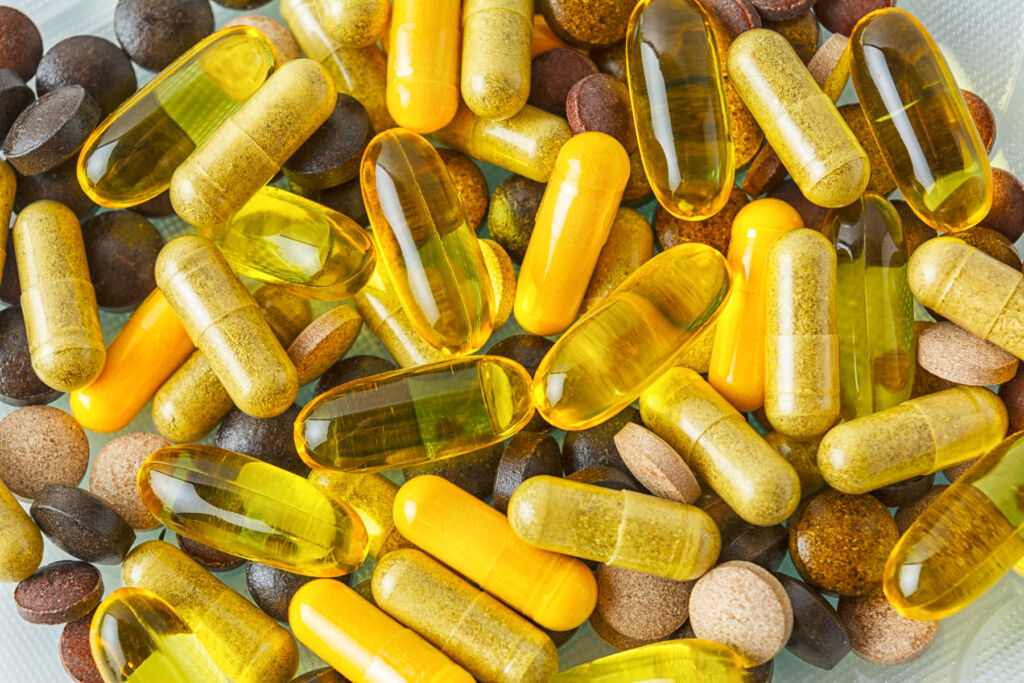
A new report from the Health & Food Supplements Information Service (HSIS) titled “VITAMIN D: THE RAPIDLY EMERGING EVIDENCE – Why We All Need To Get Vitamin D Savvy Urgently” shows that a majority of adults (55%) are not aware of the advice to take a vitamin D supplement during autumn and winter but worse still, this rises to two-thirds (67%) of over-65s.
Why does this matter? As GP and report co-author Dr Gill Jenkins, who is also part of the HSIS expert hub, explains, “The fact that vitamin-D receptors are so widely distributed throughout the body is effectively a neon sign alerting us to its potential importance for so many aspects of health and disease prevention. So, if we want to age healthily, we need to be thinking about our vitamin D supply.”
HSIS nutritionist and report co-author Dr Emma Derbyshire adds, “There is clearly still a lot to learn about vitamin D. But we’ve known for a long time that it matters for healthy bones and teeth.
“We’ve known for some time that it seems to matter for immunity and the risk and progression of autoimmune disease. And now there is a slew of emerging evidence to suggest that vitamin D matters in so many other areas of health and wellness.”
The Bones of the Issue
Dr Gill Jenkins says, “Vitamin D is essential for building healthy bones in children and adolescents, for consolidating bone mass in adults and preventing osteoporosis in later life. Evidence for the importance of vitamin D for healthy bones and teeth is settled science, and the only debate which remains is, ‘How much do we need?’.
“All the evidence, from the National Diet and Nutrition Survey and studies looking at vitamin D status, suggests that many Britons need much more of this vital nutrient than they are currently getting. And the implications for bone health alone are worrying.”
Osteoporosis is often considered a disease of old age, and the risk certainly rises as we get older, but estimates suggest that one in five women and 6.7% of men over the age of 50 in the UK have the condition.
To put it another way, more than 3.7 million people are living with osteoporosis, which causes a fragility fracture every minute.[1]
Additionally, an analysis of 28 studies which looked at the vitamin D status of more than 61,000 seniors found that those with low vitamin D levels had more than double the risk of a hip fracture than those with the highest levels.[2]
Dr Gill Jenkins says, “Osteoporosis is a brittle bone condition that is a common cause of hip fractures – especially in people aged 60 or older, but what is perhaps less widely known is that there is a 21.2% chance of dying within a year of breaking a hip.”[3]
“What is much harder to quantify is the pain and disability that comes with the condition, but ask any GP, and they will tell you osteoporosis can have a devastating impact on quality of life and the ability to live independently, so it’s important that we do all we can to prevent it.”
Studies confirm that a daily dose of 20 to 25 mcg[4] of vitamin D — more than twice the current UK recommendation — combined with an adequate calcium intake can decrease the incidence of fractures in elderly adults who are deficient in vitamin D.[5],[6]
Current vitamin D advice in the UK from the Scientific Advisory Committee on Nutrition (SACN) is that “Everyone over one year of age should consume 10mcg of vitamin D daily.”
A Mass of Muscle Evidence
The new HSIS evidence review points out that suboptimal vitamin D status is associated with muscle wasting and poor muscle function, which can also increase the risk of falls and fractures.
Explaining why, HSIS nutritionist Dr Emma Derbyshire says, “The latest thinking is that vitamin D deficiency reduces oxygen consumption in muscle and disrupts the function of the mitochondria – the nano power stations which generate almost all of the energy needed to fuel each cell.”[7]
Studies confirm that people with higher blood concentrations of vitamin D have greater hand grip strength[8] – described as an “indispensable biomarker for older adults.”
Simply measuring a person’s hand grip can accurately predict their future risk of death as well as bone density, fractures, falls, cognitive impairment, depression, sleep problems, diabetes, and quality of life.[9]

Gut Instinct
The HSIS report authors also shone a light on the wealth of evidence confirming the important role that gut bacteria have on our health and well-being.
Studies show links between our microbiota and a range of health challenges, including obesity, diabetes, arterial stiffness, inflammatory bowel disease, psoriatic arthritis, and eczema.[10]
Dr Emma Derbyshire says, “We know there is two-way communication between our gut and our brain, but there is probably a lot we are yet to learn about the role that gut bacteria plays in our physical and mental health.
“To me, an important clue is the fact that the human genome consists of around 23,000 genes, but the average microbiome encodes for more than three million genes – and every one of these genes is producing metabolites that are likely to influence our health.”[11]
Granting Immunity
Gut bacteria have also been shown to influence our immune response, so vitamin D’s ability to modulate our microbiota may partly explain how it supports our immune function and our ability to deal with respiratory infections.
Dr Gill Jenkins says, “We can all see how the seasonal pattern of winter coughs and colds aligns with reduced sunshine and the inability to produce vitamin D in our skin, and studies confirm that our risk of infections tracks our vitamin D status.”
A large UK study in The British Journal of Nutrition shows that every ten nmol/L increase in circulating vitamin D is associated with a 7% lower risk of infection, as well as improved lung function.[12]
This was confirmed by a systematic review, which found that low levels of vitamin D are associated with an increased risk of both upper and lower respiratory tract infections.[13]
The Heart of the Matter
Our heart health is also a concern as we age, and a meta-analysis of 40 studies covering data from more than 650,000 adults found that vitamin D insufficiency increased the overall risk of cardiovascular disease (CVD) by 35% and elevated the risk of death as a result of CVD by 43%.[14]
The odds of heart failure rose by 38%, heart attack by 28%, and coronary heart disease by 28%.
Dr Emma Derbyshire says, “We know that vitamin D helps regulate serum levels of calcium and phosphate and that both of these minerals regulate cardiovascular function and multiple metabolic processes, so it makes sense that our vitamin D status might influence our risk of cardiovascular and metabolic disease.”[15],[16]
Dr Gill Jenkins continues, “Cardiovascular disease accounts for around one in four deaths in the UK, and it’s estimated that there are around 7.6 million people living with diseases of the heart and circulation — and an ageing population coupled with rising rates of obesity mean that this number will continue to grow.[17]
“Anything we can do to reduce this risk, even marginally, is likely to have a significant impact in terms of public health, so the potential benefits of improving vitamin D status are very exciting.”

In the Mood for Sleep
Finally, Dr Emma Derbyshire highlights the importance of sleep, saying, “Low levels of vitamin D have been linked with poor sleep patterns and an increased risk of depression, increasingly common health challenges which often go hand in hand.
“Sleep disruption and low mood also align with more serious health challenges, including obesity, heart disease and diabetes, so it is important that we look for solutions.”
Putting the matter to bed, Dr Gill Jenkins says, “While there may be debate about the Goldilocks dose and blood serum levels that are ‘just right’, there is no doubt that vitamin D is associated with a wide range of health benefits.”
Dr Derbyshire concludes, “Given the paltry amounts of vitamin D we can obtain from dietary sources and the uncertainty about how much we can synthesise from sunlight — even during the height of summer.
“Taking a daily multivitamin and multimineral supplement with vitamin D or a vitamin D supplement providing at least the current government recommendation of 10mcg of vitamin D but all year round, not just the winter months, is really the only way to ensure an adequate intake which can support healthy ageing.”
For more information on vitamin supplements, visit www.hsis.org.
References:
- [1] report.pdf
- [2]Mason P, Aslam N, Jenkins G, Vitamin D: The challenge of bridging the gap and the rationale for supplementation; ahead of publication: The Food and Nutrition Journal
- [3] https://www.ncbi.nlm.nih.gov/pmc/articles/PMC3597289/
- [4] https://dsid.od.nih.gov/Conversions.php
- [5] https://pubmed.ncbi.nlm.nih.gov/35842938/
- [6] https://www.ncbi.nlm.nih.gov/pmc/articles/PMC9081312/
- [7] https://www.genome.gov/genetics-glossary/Mitochondria adenosine triphosphate (ATP).
- [8] Mason P, Aslam N, Jenkins G, Vitamin D: The challenge of bridging the gap and the rationale for supplementation; ahead of publication: The Food and Nutrition Journal
- [9] https://www.ncbi.nlm.nih.gov/pmc/articles/PMC6778477/
- [10] https://www.bmj.com/content/361/bmj.k2179
- [11] https://www.bmj.com/content/361/bmj.k2179
- [12] https://pubmed.ncbi.nlm.nih.gov/21736791/
- [13] https://pubmed.ncbi.nlm.nih.gov/31768940/
- [14] https://www.tandfonline.com/doi/abs/10.1080/00325481.2022.2161250?journalCode=ipgm20
- [15] https://www.ncbi.nlm.nih.gov/pmc/articles/PMC4010180/
- [16] https://pubmed.ncbi.nlm.nih.gov/31646519/
- [17] https://www.bhf.org.uk/-/media/files/for-professionals/research/heart-statistics/bhf-cvd-statistics-uk-factsheet.pdf
![]()




You must be logged in to post a comment.